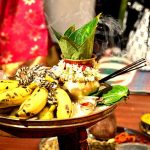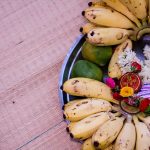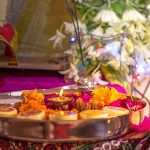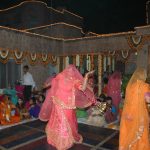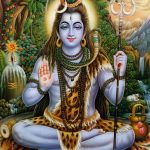The Utkala Brahmin weddings have distinct rituals and practices. Historically the Utkala Brahmins belonged to the Utkala kingdom. This area is spread over Orissa, Jharkhand, West Bengal, Chhattisgarh, Andhra Pradesh, and Telangana.
Matchmaking
The elders and parents of the bride and the groom decide on the match for Utkala Bhanmin weddings. Parents look for an eligible match for their child and match the horoscopes of a prospective match. The Utkala Brahmin community does not allow marriage within the same Gotra or line. Once there is a suitable match or horoscope and no Gotra issues, the families meet and decide on the match.
Nirbandha Or Lagnadhaara
During the engagement, the father of the groom and the father of the bride hold sacred articles in their hands and make the Sankalpa (vow) to get the couple married. The engagement is in the bride’s house or a temple. The bride and groom need not be present for the engagement. This verbal agreement is the Vaak Nischaya or oral agreement. In some regions, this vow is made in the Sakshi Gopala temple.
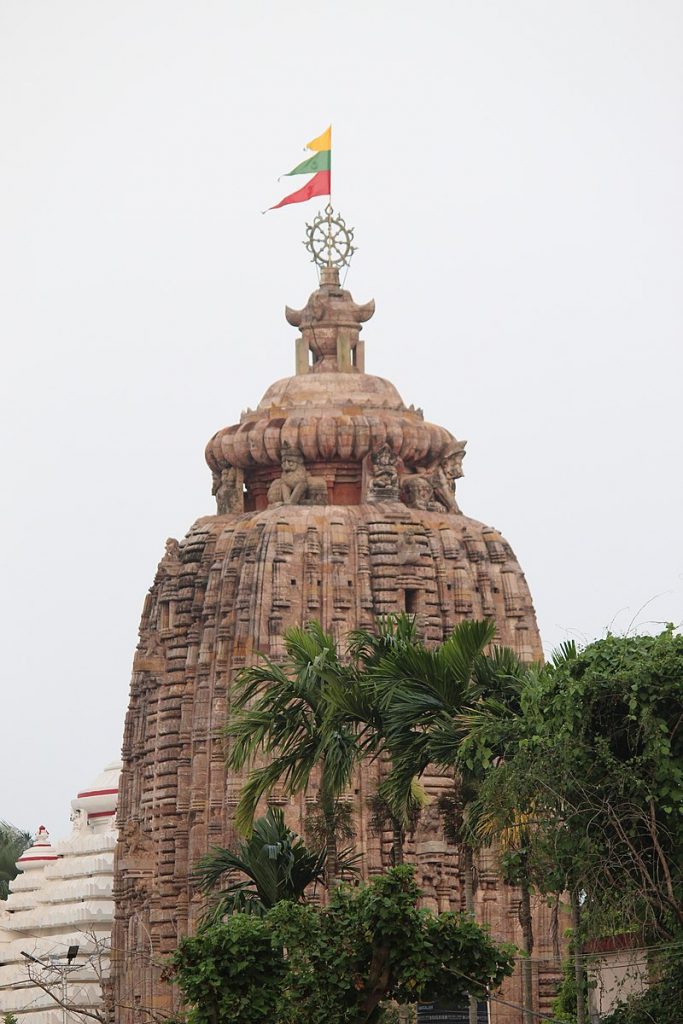
Jwain Ankula Or Jaibadi Ankula
The women in the groom’s house grind uncooked pulses on a stone and send the powder for the preparation of certain dishes.
Nimantrana
Deva Nimantrana
In Utkala Brahmin weddings, the families place the first invitation before the family deity, usually Lord Jagannath.
Moula Nimantrana
The groom’s maternal uncle or Mamu, is invited after the Deva Nimantrana. He is one of the most important relatives at an Utkala Brahmin wedding.
Jwaiñ Nimantrana
The bride’s male relatives visit the groom’s house and invite them. This is a very important Utkala Brahmin wedding ritual. It is based on the story of Sati Devi. Her father, Daksha disrespected his son-in-law Lord Shiva by not inviting him to a Yagna. Sati Devi wanted to be a part of the Yagna and went alone without her husband. When she realized her father’s disrespect for her husband, she set herself on fire and died. As a result, all families are cautious that they do not disrespect the groom or his family.
Mangana
The Mangana ritual is usually on the afternoon before the wedding day. The bride’s relatives bless the bride and the groom. Seven widowed women apply turmeric paste on the bride and give her a ceremonial bath. The groom’s sister-in-law (if her husband is alive) applies turmeric paste on the groom during the Mangana ritual.
Dian Mangula Puja
A barber’s wife ceremonially offers the bride’s bangles, saree, toe rings, Shanka Pola, and Sindoor to the Gramadevata’s temple. The family offers pooja and requests the blessings of the Gods. The bride and the groom also pray to their respective ancestors in a ceremony called the Nandimukha.
Baadua Pani Gadhua Custom
The groom, his friends, and his family arrive at the wedding venue in a procession called the Barajatri or Varaanugamana. The bride’s family greets the groom with an Arti and Tilak. His feet are washed with coconut water, and he is offered a mixture of curd, honey, and ghee. The bride’s younger brother welcomes him by carrying him on his shoulder. The bride’s family informs the bride that the groom has arrived and she has a ceremonial bath called the Baadua Pani Gadhua. The feet of the bride, as well as the groom’s feet, are painted in red patterns called Alata Pindha.
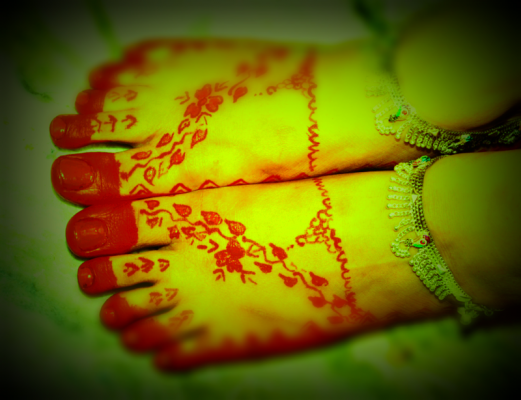
Utkala Brahmin Wedding Rituals
Hata Ganthi Or Pani Grahana
The Utkala Brahmin wedding rituals are performed in a mandap called the Vivaha Vedi. The father of the bride places her hand in the groom’s, signifying that he has handed her to the groom to take care of her till the end of her life. This is the Kanyadana. Hata Ganthi is the tying of the hands of the bride and the groom together. The priests chant Mantras over the holy fire. The priest makes seven heaps of grains to signify the Saptakulaparwata (seven hills) and they are worshipped.

The couple circumambulates the fire seven times. They offer puffed rice to the fire in a ritual called Khaiporda. The bride’s brother then gives the groom a punch on the back called the Sala Bidha. The bride’s younger sister or the Saali undoes the knot that ties the couple together. The groom applies Sindoor on the forehead of the bride and makes her wear Shankha bangles. The priest points out the pole star to the couple and the couple looks in its direction.
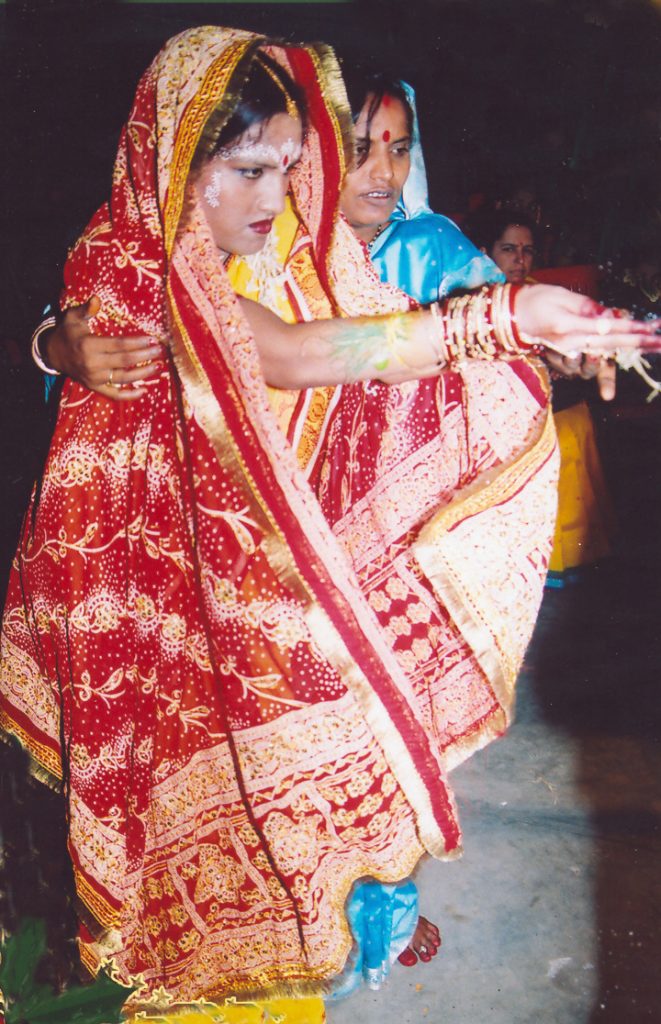
Kaudi Khela
The bride and the groom play a game where one hides a shell or Kaudi in the fist, and the other tries to open it and get it.
Sasu Dahi Pakhala Khia
The bride’s mother makes the groom sit in her lap and feeds him a dish of curd and brinjals.
Bahuna
Mournful songs are sung about the bride growing up in her father’s home and then leaving for her marital home.
Gruhaprabesa
The bride is the symbol of Lakshmi, or the Goddess of wealth, and so the family strews puffed rice on her path as she enters her new home. She then knocks over a rice-filled vessel with her right foot and crosses the threshold of her marital home.
Chauthi Or Basara Rati
As part of the Utkala Brahmin wedding rituals, the bride and the groom only meet on the fourth day after the wedding. The family performs a Homa to honor their ancestors during the day. The bride lights a Basara Dipa and the couple consummate the marriage in the night.
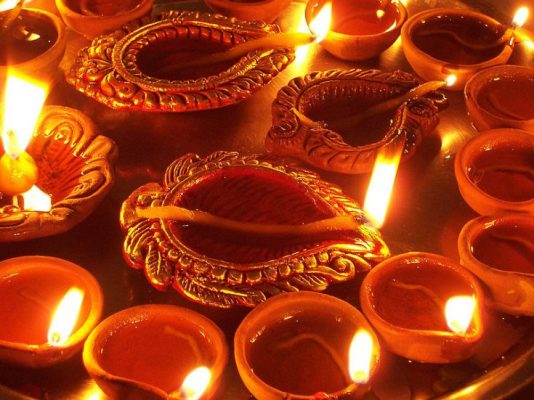
Ashta Mangala
The new couple visits the bride’s house on the eighth day. The family serves a traditional meal. The groom gifts the bride sarees and jewelry. The Utkala Brahmin wedding rituals then come to a close as the couple then continues their marital life together.




